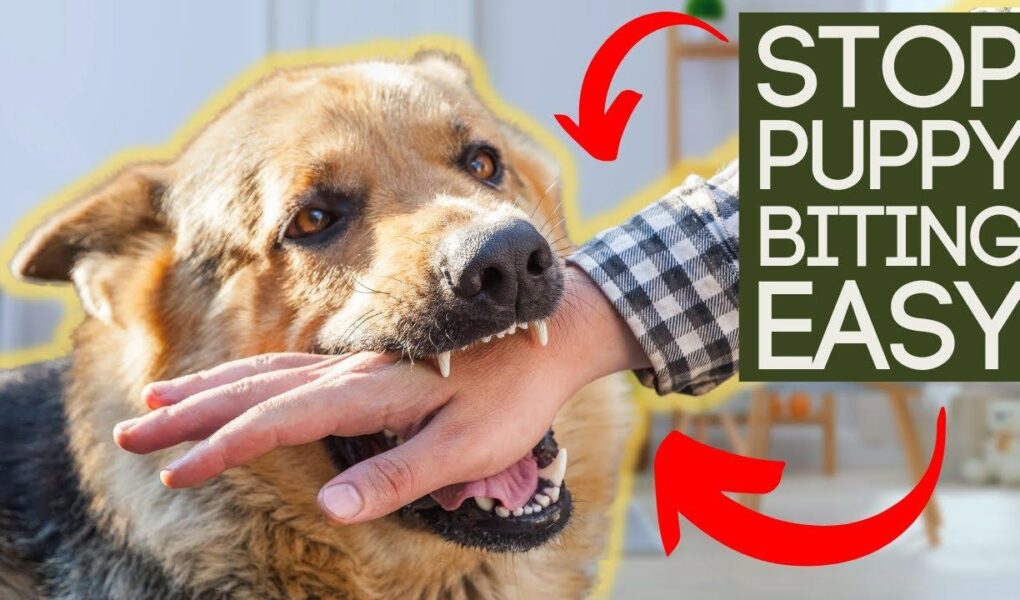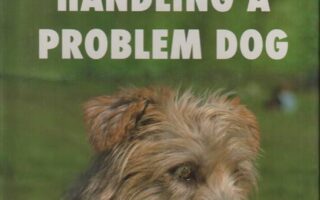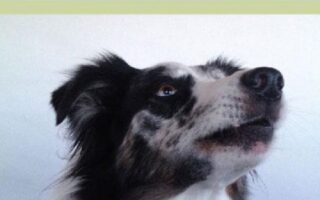Bringing a puppy into your home is like adding a bundle of joy wrapped in fur and mischief. Their playful antics and boundless energy can turn even the dullest moments into delightful adventures. However, amidst this whirlwind of cuteness lies a challenge that many new puppy parents face: the nippy phase. Those tiny, sharp teeth may seem harmless, but the instinct to bite can turn cuddly moments into tender turmoil. Fortunately, understanding why puppies bite and learning effective training techniques can transform this behavior into a more positive outlet for their exuberance. In this article, we will explore practical strategies to help foster a gentle and well-mannered companion, ensuring that both your puppy and your household remain happy and harmonious as they grow together.
Table of Contents
- Understanding Puppy Biting Behavior and Its Causes
- Effective Techniques for Redirecting Biting Instincts
- Establishing Boundaries and Consistency in Training
- Positive Reinforcement Strategies for Long-lasting Results
- Q&A
- To Conclude
Understanding Puppy Biting Behavior and Its Causes
Puppy biting is a natural behavior that stems from a variety of developmental and instinctual factors. As young canines, puppies explore their world through their mouths, and this play behavior is often a continuation of their interaction with littermates. During this playful period, they learn essential social skills, including bite inhibition. Puppies that bite too hard during play are typically corrected by their siblings or mother, which helps them understand appropriate pressure levels. Understanding the following key causes of puppy biting behavior can assist in addressing and redirecting it effectively:
- Exploration: Puppies naturally use their mouths to explore their environment and identify objects.
- Teething: Just like babies, puppies go through teething, causing discomfort that can lead to excessive biting.
- Playfulness: Biting is often an indication of excitement or a desire to engage in play with humans or other animals.
- Attention-seeking: Some puppies bite to garner attention, whether positive or negative.
Recognizing the motivations behind biting is crucial for implementing effective training strategies. One helpful approach involves positive reinforcement techniques, ensuring that when your puppy refrains from biting or redirects towards appropriate toys, they receive praise or a treat. A structured training plan may include the following elements:
| Training Element | Description |
|---|---|
| Redirecting Behavior | Encourage play with toys instead of hands or clothing. |
| Socialization | Introduce your puppy to other dogs and people to develop bite inhibition. |
| Consistent Commands | Teach commands like “No” or “Gentle” to communicate expectations. |
| Time-outs | Implement brief time-outs for excessive biting to help them calm down. |
Effective Techniques for Redirecting Biting Instincts
One effective way to address your puppy’s biting instincts is through distraction techniques that channel their energy into more appropriate outlets. When your puppy begins to nip or bite, gently redirect their focus to safe chew toys or interactive play items. This substitution not only protects your hands but also encourages positive chewing behavior. Ensure that these toys are readily available so you can quickly provide an alternative during playtime. Here are some great options to consider:
- Rubber Kongs - Fill them with treats or peanut butter for extended engagement.
- Dental Chews – Help maintain oral health while curbing biting tendencies.
- Stuffed Animals – Choose ones specifically designed for puppies to avoid choking hazards.
Consistency is key when teaching your puppy to enage differently. Implement a routine that includes regular training sessions where you praise and reward non-biting behaviors. This positive reinforcement helps your puppy associate good behavior with rewards, making them more likely to repeat those actions. Consider establishing a simple training chart to track progress. Below is a useful example:
| Behavior | Response | Reward |
|---|---|---|
| No Biting | Verbal Praise | Small Treat |
| Redirecting to Toy | Positive Acknowledgment | Playtime |
| Calm Interaction | Gentle Scratch | Favorite Activity |
Establishing Boundaries and Consistency in Training
When training your puppy not to bite, establishing clear boundaries is essential. Puppies explore their world through their mouths, but it’s crucial to guide them towards acceptable behaviors. Begin by consistently communicating what is permissible. Use firm yet gentle commands, ensuring you always respond to biting with the same reaction. This consistency helps your puppy understand the limits of play. For instance, consider the following approaches:
- Redirect behavior: When your puppy bites, immediately offer a toy to chew on instead.
- Time-outs: If the biting persists, remove your attention for a short period, signaling that playtime is over.
- Positive reinforcement: Praise and reward gentle play, reinforcing the desired behavior.
Consistency is key in reinforcing these boundaries. It’s important that everyone in your household follows the same rules to prevent confusion. Just like humans, puppies thrive in environments where expectations are clearly defined. You might find it helpful to track your puppy’s progress by using a simple table:
| Day | Biting Incidents | Response | Positive Reinforcement |
|---|---|---|---|
| 1 | 5 | Redirect to toy | Praise for gentle play |
| 2 | 3 | Time-out | Treat for calm behavior |
| 3 | 2 | Redirect to toy | Praise for not biting |
By using this method, you can witness the improvements over time, reinforcing your puppy’s learning and establishing a harmonious environment for both of you. Remember, patience and persistence are your best allies in this training journey!
Positive Reinforcement Strategies for Long-lasting Results
Developing a well-behaved puppy requires patience and a touch of creativity, particularly when addressing the biting behavior that many young dogs exhibit. Utilizing positive reinforcement strategies can not only help your puppy learn but also strengthen the bond you share. Here are some effective techniques to encourage desired behaviors:
- Reward Good Behavior: Whenever your puppy plays gently or refrains from biting, offer treats or praise immediately. This reinforces the idea that gentle play earns rewards.
- Redirect Excess Energy: Provide engaging toys that your puppy can chew on. If biting occurs, redirect them towards these toys and praise them when they engage appropriately.
- Consistent Commands: Use simple commands like “no bite” or “gentle” in a firm tone. Always follow up with a reward when they respond correctly.
- Socialization Opportunities: Arrange controlled play dates with other puppies or well-mannered adult dogs. Supervised interactions can teach boundaries in a fun environment.
Tracking your puppy’s progress can enhance your training experience. Consider maintaining a simple record of their behaviors, which can help pinpoint effective strategies and areas needing improvement. The following table outlines a few key behaviors you might monitor over time:
| Behavior | Action Taken | Outcome |
|---|---|---|
| Frequent Biting | Redirect to toys | Reduced biting incidents |
| Gentle Play | Immediate praise | Increased gentle interactions |
| Interaction with Other Dogs | Organized play dates | Better social skills |
Q&A
Q: Why do puppies bite?
A: Puppies, much like curious little explorers, use their mouths to interact with the world around them. Biting is a natural behavior that stems from teething, playfulness, and a desire for attention. It’s important to remember that your puppy isn’t being aggressive; rather, they are discovering their environment, testing boundaries, and honing their social skills.
Q: At what age should I start training my puppy not to bite?
A: The earlier, the better! Training should ideally begin as soon as you bring your puppy home—usually around 8 weeks of age. The formative weeks of a puppy’s life are crucial for learning bite inhibition, so the sooner you start, the more effective your training will be.
Q: What is bite inhibition, and why is it important?
A: Bite inhibition refers to a puppy’s ability to control the force of their bite. Teaching your puppy about this concept is vital, as it helps them learn how to interact gently with humans and other pets. This not only protects you from painful nips but also instills important social skills for future interactions.
Q: What are some effective methods to train my puppy not to bite?
A: There are several strategies you can employ to gently guide your puppy toward more acceptable behaviors. Here are a few:
- Redirecting: When your puppy nibbles on you, redirect their attention to a suitable chew toy. This teaches them what is appropriate to bite.
- Yelp or Make a Noise: When your puppy bites too hard, let out a high-pitched yelp or say ”ouch!” This mimics the behavior of their littermates, signaling that their bite was too strong.
- Time-Outs: If your puppy continues to nip, take a brief time-out. Walk away for a short period to show that rough play results in loss of attention.
- Positive Reinforcement: Reward your puppy with treats and praise when they engage gently. This reinforces good behavior and encourages them to repeat it.
Q: How long will it take to train my puppy not to bite?
A: Patience is key! Each puppy is unique, and the timeline can vary. For some, it may take a few weeks, while others may need several months of consistent training. Regular practice, along with love and understanding, will yield results over time.
Q: What if my puppy still doesn’t stop biting?
A: If your puppy continues to bite despite your efforts, consider consulting a professional dog trainer or a veterinarian. They can offer personalized guidance and check for any underlying issues that may be contributing to your puppy’s behavior.
Q: Can all breeds be trained not to bite?
A: Absolutely! While certain breeds might have stronger instincts or tendencies, all puppies can learn bite inhibition. It’s crucial to adapt your training approach based on your puppy’s individual personality and breed characteristics. Consistency, patience, and love will pave the way for success.
Q: Should I use punishment in my training?
A: Avoid using physical punishment or negative reinforcement as a training method. Such tactics can instill fear and anxiety, damaging the trusting bond between you and your puppy. Gentle, positive methods are far more effective in fostering good behavior and a confident pet.
Q: What are some long-term benefits of training my puppy not to bite?
A: Teaching your puppy not to bite lays a strong foundation for good behavior throughout their life. Not only does it promote safety and comfort for you and others, but it also helps your puppy grow into a well-adjusted, sociable adult dog. A well-trained puppy is a joy to have, paving the way for countless adventures together.
To Conclude
In the journey of puppyhood, learning not to bite is a crucial milestone that shapes your furry friend’s behavior for a lifetime. By employing patience, consistency, and positive reinforcement, you can guide your pup toward safer and more enjoyable interactions. Remember, every little nibble is a learning opportunity, and with your gentle guidance, your puppy will soon learn that love and play can thrive without the sharpness of teeth. Embrace the process, celebrate the small victories, and soon enough, you’ll find yourself with not just a well-mannered companion, but a loyal friend who understands the nuances of affection. Happy training!



